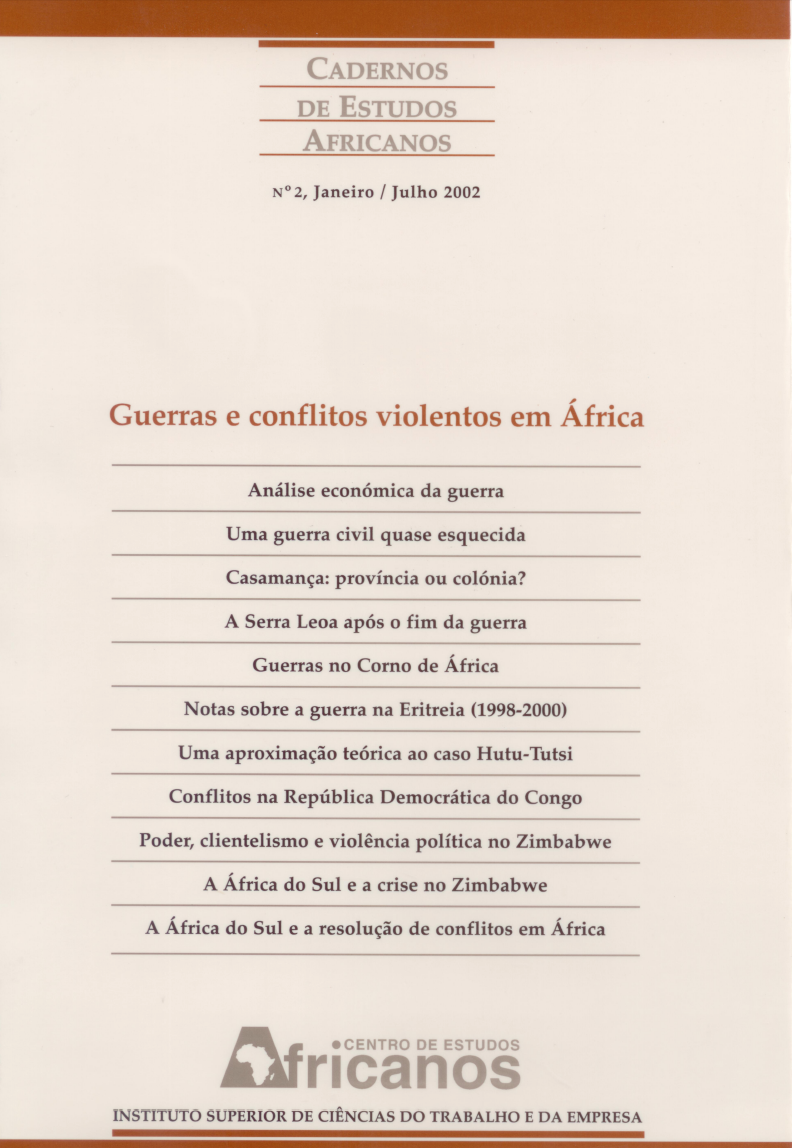Guerras no Corno de África e o desmantelamento do Estado Somália
DOI:
https://doi.org/10.4000/cea.1280Palavras-chave:
conflito, formação do estado, SomáliaResumo
A Somália foi uma construção colonial artificial e não conheceu e formação de um Estado sólido e enraizado. A pesar da sua suposta homogeneidade, as suas famílias clânicas funcionam como entidades independentes umas das outras, e parece duvidoso que haja na Somália uma adesão a ideia de um Estado Único e abrangente. A derrota militar frente à Etiópia, o fracasso da revolução socialista, e a ressurreição do «clanismo» provocaram o colapso deste Estado no fim dos anos 80. Posteriores esforços internacionais para o reconstruir falharam porque a comunidade internacional ignorou as realidades da lógica política dos clãs. A única região onde se conseguiu restaurar estruturas políticas estatais e a da Somalilândia onde tem como suporte uma determinada família clânica. Ora, estas tentativas tem sido rejeitadas a nível internacional, muito embora constituam um modelo claro e bem sucedido para a restante Somália.
Referências
A. ABBAY, 1998, Identity Jilted or Re-imagining Identity: the Divergent Paths of the Eritrean and Tigrean Nationalist Struggles, N. J., Red Sea Press.
A. M. lSSA-SALWE, 1994, The Collapse of the Somali State, London, Haan.
A. TIRUNEH, 1993, The Ethiopian Revolution 1974-1987, Cambridge University Press.
B. ZEWDE, 1991, A History of Modern Ethiopia, 1855-1974, Ohio, Ohio University press.
C. CLAPHAM, 1990, Transformation and Continuity in Revolutionary Ethiopia, Cambridge University Press.
D. CONNELL, 1997, Against All Odds: A Chronicle of the Eritrean Revolution, N. J., Red Sea Press.
D. DONHAM,1986, «Old Abyssinia and the New Ethiopian Empire: Themes in Social History», in Donham and James (ed), The Southern Marches of Ethiopia, Cambridge University Press.
D. POOL, 1983, «Eritrean Nationalism», in I. M. Lewis (ed), Nationalism and Self-Determination in the Horn of Africa, London, Ithaca Press.
I. M. LEWIS et al., 1995, A Study of Decentralised Political Structures for Somalia: A Menu of Options, London, LSE.
I. M. LEWIS, 1993, Blood and Bone: The Call of Kinship in Somali Society, New Jersey.
J. McCANN, 1987, From Poverty to Famine in North East Ethiopia: A Rural History 1900-1935, Philadelphia, University of Pennsylvania.
J. SORENSON, 1993, Imagining Ethiopia: Struggles for History and Identity in the Horn of Africa, N. J., Rutgers University Press.
J. YOUNG, 1997, Peasant Revolution in Ethiopia: the Tigray Peoples Liberation Front, 1975-1991, Cambridge University Press.
J. YOUNG, 1998, «Regionalism and Democracy in Ethiopia», Third World Quarterly,19.
DOI : 10.1080/01436599814415
L. V. CASSENELLI, 1982, The Shaping of Somali Society, Philadelphia, University of Pennsylvania.
M. PLAUT & P. S. GILKES, 1999, Conflict in the Horn: Why Eritrea and Ethiopia are at War, London, Royal Institute of International Affairs.
MOHAMED HASSAN, The Oromo of Ethiopia, Cambridge University Press, 1990
MOHAMED OSMAN OMAR, The Road to Zero: Somalia's Self-Destruction, Haan, London 1992
P. BAXTER, 1983, «The Problem of the Oromo or the Problem for the Oromo?», in I. M. Lewis (ed), Nationalism and Self-Determination in the Horn of Africa, London, Ithaca Press.
R. IYOB, 1995, The Eritrean Struggle for Independence: Domination, Resistance, Nationalism 1941-1993, Cambridge University press.
S. S. SAMATAR & D. D. LAITAN, 1987, Somalia: Nation in Search of a State, Colorado, Westview Press.
T. NEGASH, 1987, Italian Colonialism in Eritrea, 1882-1941, Sweden, Uppsala.
THE UNITED NATIONS AND SOMALIA 1992-1996, 1996, UN Blue Book Series, vol. VIII, New York.
Downloads
Publicado
Edição
Secção
Licença
Direitos de Autor (c) 2016 Cadernos de Estudos Africanos

Este trabalho encontra-se publicado com a Licença Internacional Creative Commons Atribuição-NãoComercial-CompartilhaIgual 4.0.
Autorizo a publicação do artigo/recensão submetido do qual sou autor.
Declaro ainda que o presente artigo é original, que não foi objecto de qualquer tipo de publicação, e cedo em exclusivo os direitos de publicação à revista Cadernos de Estudos Africanos. A reprodução do artigo, no todo ou em parte, noutras publicações ou noutros suportes depende de autorização prévia da editora Centro de Estudos Internacionais do Iscte - Instituto Universitário de Lisboa.


